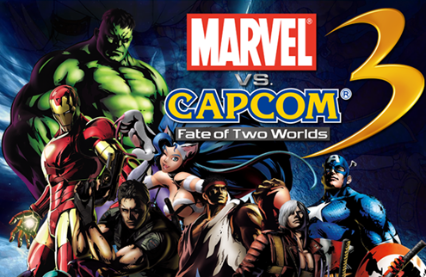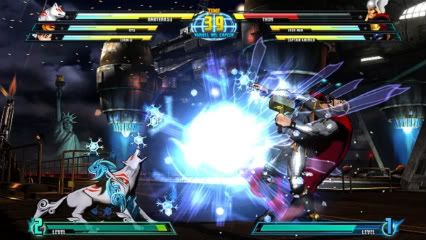
Capcom is a company on a mission; to make fighting games relevant to everyone. Rather than just trying to satisfy a niche audience, they have been taking steps to ensure that even casual fans of the genre can have a deep and rewarding experience. Street Fighter IV did so by taking the core of Street Fighter II, which many people were familiar with, and layering on top of that new mechanics. With the extensive tutorials, challenges, and the ability to watch replays of online matches they tried to encourage players to develop their skills. The focus was put not onto knowing how to pull off special moves, but when you should do so. Marvel vs. Capcom 3 is taking that concept to the next level with its newly announced simple mode.

Simple mode was revealed at TGS 2010 for the first time, and although serious players might baulk at the idea, it certainly makes the game far more accessible. No longer do you have to worry about learning a character’s moves due to them being mapped to a button and direction. Pulling off a fireball, dragon punch or hurricane kick is now as easy as holding the stick in the right direction and pressing a button. The Marvel vs. Capcom series has always allowed even novice players to pull off spectacular moves, and simple mode is an extension of that philosophy. There are several reasons for this drastic simplification. It allows players to not worry so much about the specifics of how to pull off a move and allows them to understand the importance of timing their moves. It also encourages players to explore what will no doubt be a massive roster without the need to learn new commands. Finally, for those who really do just want to button mash it is an easy way to them to have fun doing so, and perhaps to let them challenge skilled opponents on a more level playing field.

The new aerial button shares a similar ideology to simple mode. In previous Marvel vs. Capcom games there were character specific attacks which would launch an opponent into the air to open up juggle attacks. This time the aerial button serves that function, making that mechanic more accessible to everyone. Simplifying the process though doesn’t take away the depth of this feature, and the tactical element comes into play by deciding what to do once you have launched someone into the air. You can follow the launch by pressing up to jump up alongside them and from there you can go into combos, call in other squad members to assist in the juggle, or slam them back down to the ground by holding down on the stick and pressing the aerial button. This really opens up the juggling mechanic to people who don’t decide to dedicate themselves to learning the intricacies of a fighting game, and the system works in such a way that if you can pull off aerial combos with one character you will be able to do so with any other character. There are small differences in the timing between the characters, but the process remains the same.

There has been criticism from some that the game looks too dark in comparison to its predecessors but up close, the game is surprisingly vibrant. The character models may look less cartoony than their 2D sprite versions but they have a crispness and sharpness that really make them stand out against the environment. The backgrounds available to play at the show were noticeably brighter than some that had been shown off in previous builds. The game isn’t as charmingly gaudy as Marvel vs. Capcom 2, but the slightly darker tone is well incorporated. The use of shadows in the game is especially effective and when a super move is unleashed it looks spectacular to see your character highlighted against a dark backdrop, your silhouetted opponent preparing to take the onslaught. And even at this stage Marvel vs. Capcom 3 has really surpassed its predecessors in the presentation stakes by opting to focus on the roots of the Marvel characters. Comic book sound effects appear onscreen after landing meaty blows, and at the end of the fight the characters in the winning team are portrayed in the style of a classic comic book panel. These extra touches, and an added level of attention to detail, are a welcome improvement to the previously minimalist nature of the presentation in the series.

The evolution from Marvel vs. Capcom 2 to 3 looks to be a smart one. Taking some obvious inspiration from Tatsunoko vs. Capcom, it is looking to streamline the way the game is controlled without compromising the depth of the fighting mechanics. Purists might not approve, but the game is an opportunity for Capcom to redefine the way which we view fighting games. Still as crazy and over-the-top as it has ever been, Marvel vs. Capcom 3 is a fighting game designed for everyone to enjoy by making the madness manageable.



















Comments